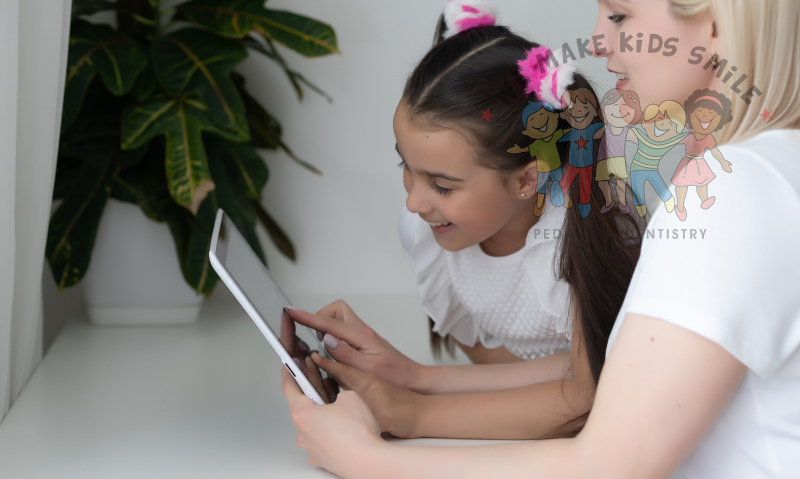Is dental bonding the right choice for kids?
The idea of dental bonding for kids may seem like a strange concept. Isn’t it typically used for adults? Yes, it can be. But dental accidents happen to people of all ages, resulting in cracked or broken teeth. Bonding can even be used to help fill in the gaps between teeth. Dental bonding is an excellent tool to help your child’s smile shine bright!
If you’ve never heard of dental bonding before, you might have some questions. We’ve got you covered with answers to nine commonly asked questions about dental bonding.
1. What is dental bonding?
Dental bonding is a procedure that uses a tooth-colored composite resin to repair chips or cracks in teeth. It can also be used to close gaps or change the color of a tooth. The dentist sculpts the resin straight on the tooth and then hardens it using a special light. The procedure is completed in one visit.
Dental bonding is more common than you might think. In fact, it is one of the most common dental procedures.
2. Are crowns and dental bonding the same thing?
Dental bonding and crowns have some similarities, but are different procedures. They are both used as dental restorations but they have different purposes.
Crowns are often used if a tooth is severely damaged and is unable to be repaired. Crowns are fabricated outside of the mouth before they are finally seated on the tooth. This often requires multiple visits to the dentist.
Dental bonding, on the other hand, is used to fill in minor cracks, adjust misshapen teeth, or fill in smaller gaps. Bonding is typically done in one visit, as the resin is formed within the mouth. With dental bonding, the natural tooth can remain intact.
3. Can bonding be done on baby teeth?
Dental bonding can be used on patients of all ages even for kids!
Children are known for being daredevils which often leads to accidents. These mishaps can cause chipped, cracked, or even missing teeth. If the case is severe enough, this can create misalignments with their adult teeth, or even jaw issues. Your child’s dentist will be able to look at their individual case and create a plan just for them.
Sometimes, when adults don’t lose a baby tooth, dental bonding is used to build up the retained baby tooth. Bonding can help match the color and size to the adult teeth.
4. How is bonding different from a filling?
Fillings are used to help improve the functionality of the tooth and repair teeth affected by tooth decay. Though fillings can have a cosmetic purpose at times, that isn’t usually the focus. Dental bonding, on the other hand, can be used for both cosmetic and functional purposes. It can be done in one sitting, without the need for local anesthesia or drilling, and repairs issues, such as cracked and chipped teeth.
5. Is bonding just a cosmetic procedure?
Not always! Severe gaps can create issues as time goes on. If a baby tooth was lost too early, leaving a gap, the remaining teeth can slowly move toward that space, causing misalignments. This can create bigger problems in the future. Misaligned teeth are at a higher risk of tooth decay and gum issues. If severe enough, misalignment can cause speech and eating difficulties.
6. What are the benefits of bonding?
Dental bonding is pain-free and can be completed in one sitting. There is no downtime! As soon as the procedure is done and your child leaves the dentist’s office, they should be ready to resume all of their normal activities. Their daily dental care routine doesn’t have to change either.
7. How long does dental bonding last?
Typically, the resin can last from three to 10 years before it needs a touch-up. This depends on several factors, one of which is if the bonded tooth was a baby or an adult tooth. Also, if your child is really rough on their teeth, the resin used in the dental bonding can crack and chip easier.
8. What are some reasons dental bonding may not be the right choice?
If your child has a cracked or chipped tooth, their pediatric dentist will take the time to determine if dental bonding is the right choice for them. If the damage goes deep enough, it could be more prone to infection and require a more involved restoration, such as a crown.
Always remember, if you have any questions or concerns, be sure to speak to your child’s dentist. They will walk you through a plan that seems best for your child, explaining it every step of the way. They want the parents to feel as though they are part of their child’s dental team, and not just a bystander.
Contact We Make Kids Smile today to come in and see us!
If your child is due for their regular dental cleaning or has a cracked or chipped tooth that needs to be addressed, be sure to contact us for an appointment. We look forward to taking care of you and your family.
